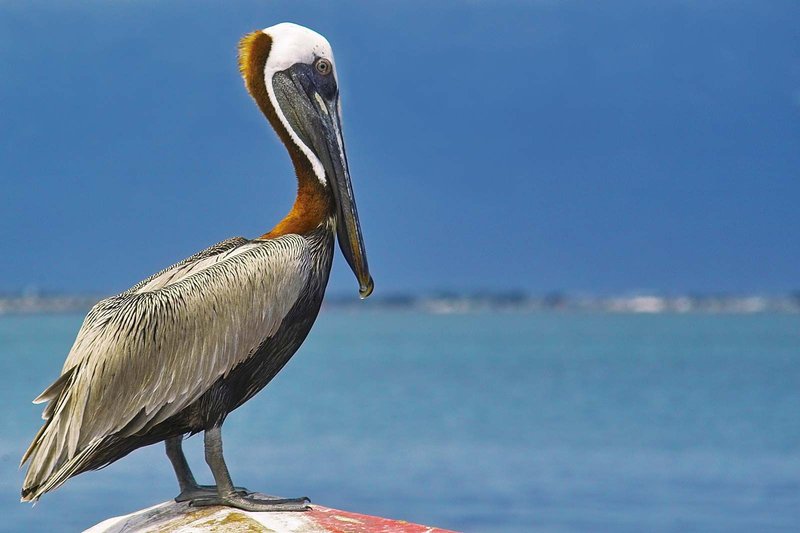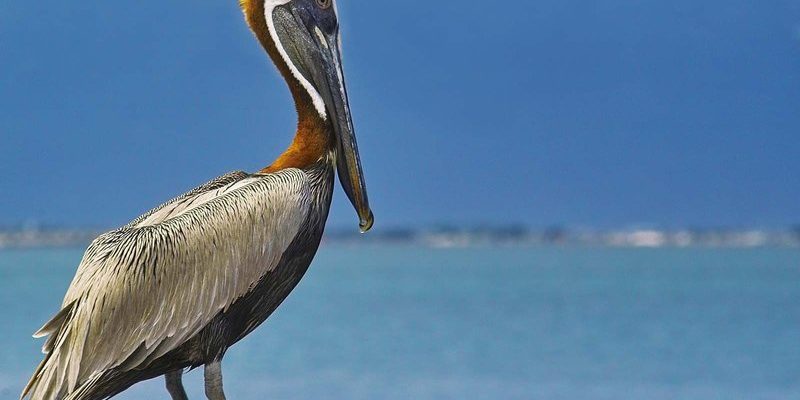
So, how do you spot these fascinating creatures among the many birds that share their habitats? Let’s break it down in a way that’s easy to understand. From their unique physical characteristics to their playful behaviors, identifying a pelican can be a fun challenge. Here’s what you need to know.
Recognizing Pelican Features
Pelicans are easy to spot once you know what to look for. These large birds stand out due to their distinctive features. First and foremost is that massive bill. The pelican’s beak can be over a foot long, equipped with a stretchy pouch that helps it catch fish. Imagine trying to eat spaghetti with your hands—this pouch serves the pelican by holding its meal while it swoops down to scoop them up.
Their body shape is also a giveaway. Pelicans have long necks, broad wings, and heavy bodies. When they take to the air, they resemble a graceful kite, soaring with their wings outstretched. Look for their white plumage, particularly in species like the American white pelican, contrasted against the blue sky. If you happen to see a brown pelican, observe the darker, rich tones of its feathers.
Don’t forget about their behavior! Pelicans are often seen diving into water in search of food or paddling around in a relaxed manner. You might catch them soaring above the water, then suddenly plunging down with grace. It’s a sight that can leave you in awe, as they seem to dance through the air.
Pelican Habitats: Where to Look
Pelicans thrive in a variety of habitats, primarily near coastlines, lakes, and rivers. These birds are drawn to brackish waters, which mix fresh and saltwater—think estuaries and lagoons. When you’re out and about, keep an eye on areas with abundant fish populations. After all, that’s what they’re after!
If you’re planning a trip to a coastal area, consider visiting regions like the Gulf of Mexico or the California coast. Here’s a tip: check out local fishing piers or marinas, where pelicans often hang out, waiting for a handout or searching for fish. They’re like the locals in a café, always looking for the best catch of the day!
Inland, they can be spotted around large lakes or reservoirs, especially during migration seasons. Tracking seasonal movements can greatly increase your chances of a sighting. If you’re near a spot with lots of wildlife, you just might find them there.
Spotting Pelican Behavior
Understanding pelican behavior can make it easier to identify them in their natural environment. These birds are social creatures, often found in groups. If you see a cluster of them sitting together, you’re likely looking at pelicans. They seem to enjoy each other’s company, sharing space while they preen their feathers or rest.
When pelicans are hunting, pay attention to their feeding techniques. They often fish in groups, diving in unison to catch fish from the surface. It’s fascinating to watch them cooperate, almost like a synchronized swimming team! Also, keep an ear out for their unique calls—a series of loud, croaking sounds that can be quite loud.
And then there’s the characteristic head bobbing; they’ll bob their heads in a sort of dance as they look for fish. This behavior can help you spot them from a distance, especially if they are mixed in with other birds.
Distinguishing Different Pelican Species
While all pelicans share common traits, there are distinct differences between species. The American white pelican is one you can’t miss. With striking all-white plumage and a black stripe on the wings, they’re a beautiful sight. Their large size and elegant appearance make them a favorite for bird watchers.
On the other hand, the brown pelican is much smaller and has a darker, browner body with a distinctive diving behavior. They’re known for their impressive feeding technique—diving headfirst into the water from impressive heights. It’s almost like a high-diving act at a local pool.
If you happen to be near the Dalmatian pelican, you might notice their huge size and bushy tuft of feathers on their heads. These pelicans can make quite an impression! Learning the specific features of each species can enhance your identification skills and deepen your appreciation for these wonderful birds.
Using Binoculars for Better Viewing
When observing pelicans, having a good pair of binoculars can make a huge difference. Honestly, binoculars can be a game-changer for bird watching. They allow you to see details you wouldn’t catch with the naked eye, like the color variations in their feathers or the intricate patterns on their beaks.
When choosing binoculars, look for ones with at least a 10x magnification and a suitable lens diameter. This will give you a bright, clear view without making it too heavy to carry around. Plus, don’t hesitate to scope out a peaceful spot where the pelicans gather. Finding a quiet place near the water can allow for an immersive experience.
Remember to bring a notebook to jot down what you see. It’s a fun way to document your findings and track the different behaviors of the pelicans you encounter. You never know—you might spot a unique feeding technique or an interesting interaction between them!
Protecting Pelicans and Their Habitats
As we learn to identify pelicans, it’s crucial to remember their importance in the ecosystem. These magnificent birds play a significant role in controlling fish populations and maintaining healthy aquatic environments. However, pelicans face threats from habitat loss, pollution, and climate change.
You might be wondering, what can we do to help? Supporting conservation efforts, whether through donations or volunteering, can make a big difference. Getting involved in local clean-ups along waterways or advocating for the protection of habitats can contribute to their survival.
By spreading awareness about these stunning birds, you can help ensure future generations get the chance to witness them in the wild. After all, every small action counts in safeguarding our natural world.
Identifying a pelican in the wild can be a delightful and enriching experience. With a little knowledge about their features, behaviors, and habitats, you can become an adept bird watcher. Whether you’re strolling along a beach or exploring a lake shore, let the thrill of spotting these fascinating birds inspire your next outdoor adventure.
So next time you find yourself by the water, keep your eyes peeled for those distinctive shapes soaring through the sky or basking in the sun. Maybe, just maybe, you’ll get to witness a pelican’s impressive dive or its playful antics with friends. Happy bird watching!

